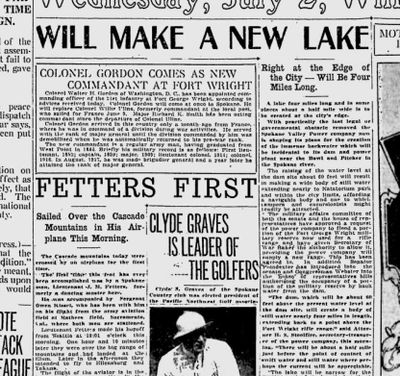100 years ago in Spokane: Power company nearing final approval for dam at Bowl and Pitcher in Spokane River that would create 4-mile lake

The Spokane Daily Chronicle reported that the Spokane Valley Power Co. was going forward with plans to dam the Spokane River at Bowl and Pitcher, creating “a lake four miles long” right to the edge of the city.
The Chronicle said that “practically the last legal or governmental obstacle” had been removed for building the 60-foot-high dam. However, as any current visitor to Bowl and Pitcher can see for themselves, this dam would never be built.
From the nudity beat: A group of 10 “happy boys in birthday clothes” were arrested for cavorting nude in a Hangman Creek swimming hole.
It was not exactly unusual for boys to swim naked, but the problem was that these boys, age 10 to 16, were within sight of the back porches of homes on the end of Pacific Avenue. A day earlier, the neighbors had complained, not only about the nudity, but also about the boys’ language.
So the commissioner of public safety sent a police officer to sit on the back porch the next day. Sure enough, the boys showed up, stripped down and commenced to whoop it up.
All 10 were “given a ride in the police patrol wagon to the juvenile detention rooms.”
From the aviation beat: Lt. J.M. Fetters of Spokane became the first pilot to fly over the Cascades.
He left Seattle with Sgt. Owen Kissel just after 10 a.m. and landed an hour and 10 minutes later in Cle Elum. They next planned to fly to Ellensburg and Yakima.
From the war beat: The enormous banner headline in the Spokane Daily Chronicle read, “Peace Wins: Huns Quit, Will Sign Treaty.”
This seemed a bit late, coming seven months after Germany had agreed to an armistice in World War I.
However, no actual peace treaty had yet been signed. A new German government at Weimar had finally agreed to terms, as the headline stated, and was ready to sign.
In a little more than a week, Germany would sign what became known as the Treaty of Versailles.